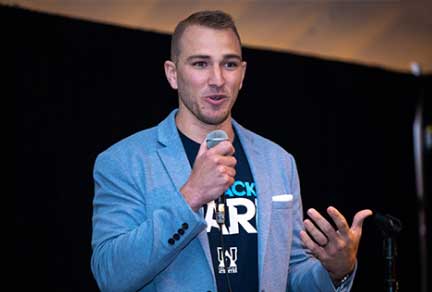Part 4: ‘Learnings from China: Managing in the time of pandemic’
In earlier blogs, we examined how Parexel worked with sponsors, sites, and regulators to ensure patient safety and business continuity in the thick of the pandemic, and what biopharma and CROs should be planning for as we emerge from crisis mode and transition into the “new normal.”
Now we’ll focus on the long-term implications anticipated for healthcare and biopharma.
“The coronavirus crisis and its aftermath … augurs the ‘imminent restructuring of the global economic order,” according to an April 2020 McKinsey report titled, “The future is not what it used to be: Thoughts on the shape of the next normal”. The report called out seven strategic areas that leaders need to focus on because of lessons learned from COVID-19. We are going to focus on three areas (shown in bold) and related clinical implications:
- Building greater resilience into clinical research systems in order to withstand shocks.
- Contact-free transactions to reduce the number of face-to-face interactions needed to conduct business. Changes here can reduce patients’ travel burdens and their anxiety about visiting a hospital or clinic.
- Changes in public views as a result of the COVID-19 experience, such as toward the use and sharing of personal data to improve healthcare and stop pandemics from happening.
These strategic shifts align with Parexel’s lessons learned in China, and our perspective regarding the future of healthcare consumption and delivery. Let’s take a deeper look at what we see coming.
The future is patient-focused, decentralized, tech-enabled, data-integrated, and collaborative
Just as the financial crisis of 2008 led to a rapid and seismic shift to online advertising and away from newspaper ads, we believe COVID-19 will mark an inflection point in the use of decentralized clinical trials (DCTs), both virtual and hybrid, and to telehealth visits.
DCTs are fit-for-purpose in lessening patient anxiety about visiting hospitals (an anxiety that will likely last well after the pandemic is contained); making clinical trials more resilient and more efficient (the McKinsey report posited that the tilt toward resilience would be at the expense of efficiency); and reducing face-to-face contacts while boosting digital interactions.
We believe these will be among the silver linings of COVID-19 – a reduced travel burden for patients in trials, more trial steps conducted in their homes or nearby, and less anxiety prompted by site or hospital visits. These benefits align with Parexel’s patient-centric approach.
Additionally, the use of telemedicine/telehealth is soaring worldwide because of the pandemic. The McKinsey report cited telehealth as long-term strategic shift likely to occur because of COVID-19. We agree and believe that this also bodes well for a more virtual clinical trial structure. As hospitals and providers become more familiar with telehealth, it should create more acceptance of, and comfort with, DCTs.
Big data’s role in an evolving pandemic
COVID-19 has also provided sparkling examples of how big data can be leveraged to manage a pandemic, with implications for the biopharma industry in terms of the future use of real-world studies.
For example, Taiwan integrated its national health insurance database with its immigration and customs database to create data records about individuals’ travel histories and clinical symptoms. It classified travelers’ infection risks based on recent travel. Individuals with no travel in the previous 14 days to COVID-19-infected areas were given quick immigration clearance, while individuals who had traveled to infected areas were required to self-quarantine at home.
The result: Taiwan had far fewer infections and deaths from COVID-19 than originally predicted.
The use of apps in Singapore and Hong Kong to track an individual’s movements has also proven useful, both in enforcing quarantines and in determining who has come into contact recently with infected individuals.
Still, there is more work to be done. COVID-19 also has exposed the inability of most countries to use integrated data to respond to the crisis. These data are siloed because the respective systems that house disparate data sets can’t speak to each other. These “interoperability weaknesses” can be solved through healthcare information exchanges (HIEs). In fact, a recent Brookings Institution report cited the need for HIEs on a national and even international scale to help identify and contain pandemics through the use of big data.
“A wide variety of factors affect one’s overall well-being, a very small fraction of which could be quantified via medical records,” wrote the report’s author, Brookings Fellow Niam Yaraghi. “Interoperability, even among healthcare providers, remains a major challenge where exchange and analysis of non-medical data for healthcare purposes almost never happens.”
‘We have data along the entire process – and data are fragmented.’
Experts’ use of diverse data sources to deal with the COVID-19 crisis – healthcare, travel, etc. – highlights the need for data integration. A Parexel-commissioned report by The Economist Intelligence Unit focused on data integration as a major opportunity for drug developers to gain insight and innovate.
The challenge with data integration is characterized by “three Vs” of healthcare big data: volume, velocity and variety. Old ways of collecting data, e.g., radiology images and patient medical records, have been joined by new methods – from biometric sensors and genomics to social media.
“One of the key changes in today’s world is the fact that we have data along the entire
process – and data are fragmented,” said one expert quoted in the report.
Until these silos are bridged, data will be unavailable to yield evidence-based insights and spur innovation.
Lesson learned: Keep the collaboration going, build on the trust earned
One lesson the crisis drove home for Parexel in China is the importance of collaboration and trust. The rapidity with which ideas were shared, decisions made, and actions taken was breath-taking and heart-warming. We’ve also seen how opinions and attitudes can quickly change when new ways of operating are implemented out of necessity. “Wow, this is actually a lot better” or “I had no idea this was possible” sum up reactions we’ve heard to workarounds necessitated by the travel restrictions.
Collaboration, adaptability, and trust are essential to shift to a more resilient, patient-friendly, and efficient way of conducting clinical trials. CROs can and should play a central role in coordinating this shift among sponsors, investigators, regulators, and good clinical practice offices.
Related Insights
Podcast
Enabling Successful Sites, Episode 2: Empowering Sites to be More Inclusive Through Cultural Sensitivity Training
Jun 28, 2024
Blog
Preparing for a new era in European Market Access
Jul 22, 2022
Article
Can Chinese Phase I data from the West accelerate China drug development?
Mar 17, 2021
Article
Six top tips to prepare for the new EU Clinical Trial Regulation
Apr 13, 2021
Article
Tencent-Backed Wedoctor Is Going Public: What Are the Next Steps for Chinese Digital Health Companies?
Jun 30, 2021
Article
India, the Generic Manufacturing Powerhouse, Biosimilar Next?
Jul 21, 2021
Article
Evidence Generation Strategy under Germany’s Digital Healthcare: Is More Better?
Aug 6, 2021
Blog
Highlights from ISMPP Asia Pacific Meeting 2021
Sep 20, 2021
Blog
What COVID Taught Us About Focus, Innovation, and Leadership
Sep 24, 2021
Whitepaper
Master Protocols from Design to Delivery
Sep 30, 2021
Article
Expedited Pathways Comparisons - US EU CHN
Oct 19, 2021
Video
Biotech Showcase: Fireside Chat with Jamie Macdonald
Jan 3, 2022
Related Insights
Podcast
Enabling Successful Sites, Episode 2: Empowering Sites to be More Inclusive Through Cultural Sensitivity Training
Jun 28, 2024
Blog
Preparing for a new era in European Market Access
Jul 22, 2022
Article
Can Chinese Phase I data from the West accelerate China drug development?
Mar 17, 2021
Article
Six top tips to prepare for the new EU Clinical Trial Regulation
Apr 13, 2021
Article
Tencent-Backed Wedoctor Is Going Public: What Are the Next Steps for Chinese Digital Health Companies?
Jun 30, 2021
Article
India, the Generic Manufacturing Powerhouse, Biosimilar Next?
Jul 21, 2021
Article
Evidence Generation Strategy under Germany’s Digital Healthcare: Is More Better?
Aug 6, 2021
Blog
Highlights from ISMPP Asia Pacific Meeting 2021
Sep 20, 2021
Blog
What COVID Taught Us About Focus, Innovation, and Leadership
Sep 24, 2021
Whitepaper
Master Protocols from Design to Delivery
Sep 30, 2021
Article
Expedited Pathways Comparisons - US EU CHN
Oct 19, 2021
Video
Biotech Showcase: Fireside Chat with Jamie Macdonald
Jan 3, 2022



